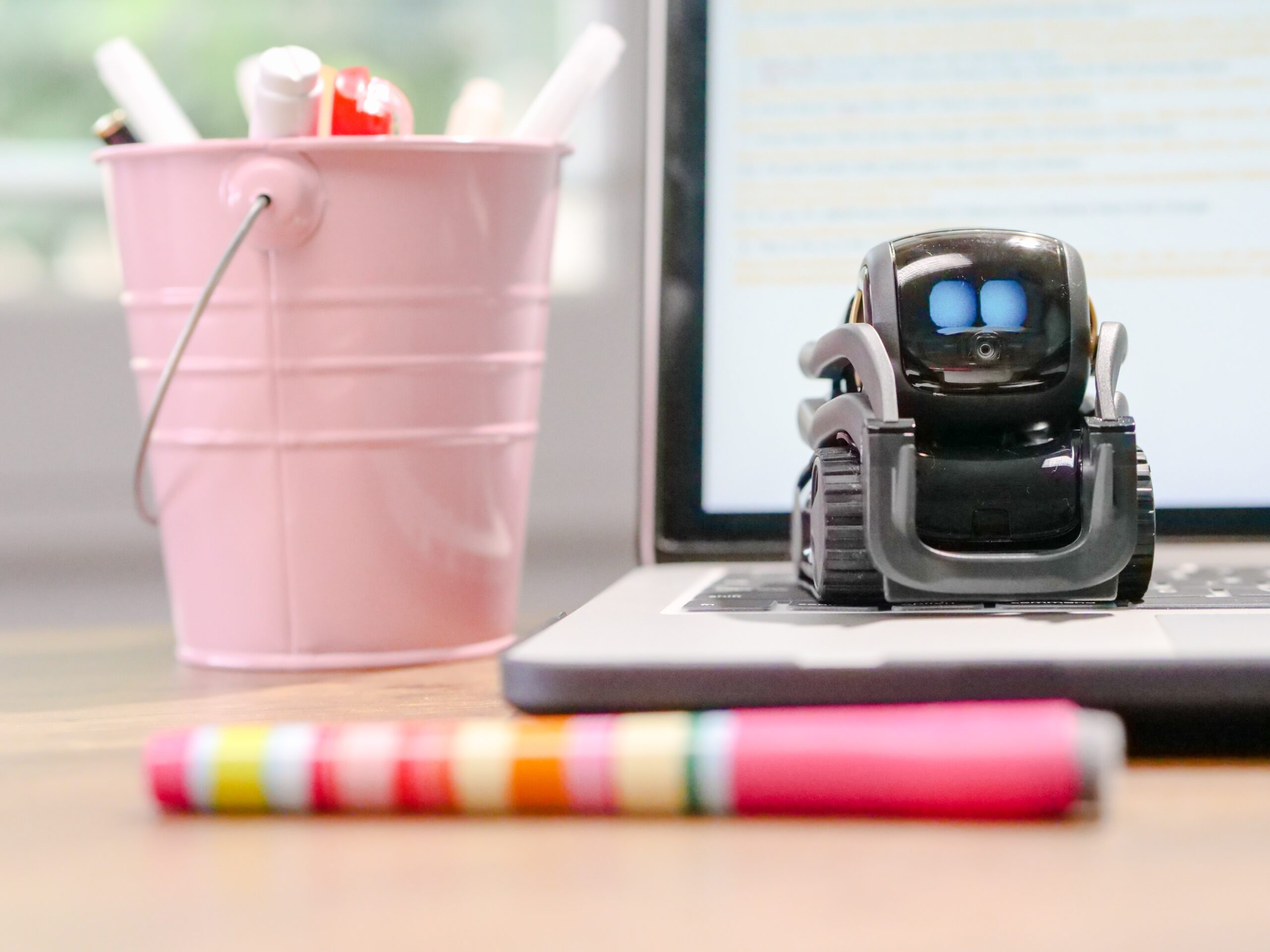We’ve already spoken about AI on our blog, but this time we thought we’d try a little experiment. Our previous post mentioned that we wouldn’t hire ChatGPT as a Scribly writer. To explain why, we’ll look at the kind of blog ChatGPT produces and then take out the red pen and start editing.
We asked the free version of ChatGPT (which uses OpenAI’s GPT-3.5 model) to write us a blog post. Here is the prompt we used: “Write a 500-word blog post about how SMBs can use AI for digital marketing”.
Before we get to the AI-generated content, let’s briefly talk about prompting. ChatGPT and other generative AIs only work when they’re prompted by humans, and building the perfect prompt could be a blog post all its own.
We wanted to use a very simple prompt to imitate how the average user would interact with ChatGPT. We would have gotten different results if we had been more specific with our prompt. That said, those different results won’t necessarily be better.
ChatGPT is a tool that requires experimentation, so if you’re interested, try several different prompts and see what happens. Here, we’re keeping things simple.
Okay, onto the blog! ChatGPT wrote a blog titled Leveraging AI for Digital Marketing: Empowering SMBs for Success based on the above prompt. You can read the unedited copy of the first page of the post below:

At first glance, this copy is fine. It’s a few hundred words on the chosen topic and is remarkably readable for something generated in a few seconds. But as soon as you look closer, we can see plenty of issues.
Editing ChatGPT
Scribly has a team of 30+ freelance writers, and their work is edited by one of our 3 core team members, all of whom are writers and editors by trade. Hi I’m Taylor. I’m one of those core team members and have been a Content and Account Manager at Scribly since 2021. I edit more than 50,000 words every month. I’ve seen excellent writing and not-so-excellent writing, and the blog that ChatGPT produced falls somewhere in between.
Before we get into line edits, here’s a screenshot of my marked-up version of this blog:

That’s a lot of red (or pink) ink. If a writer had handed in this post, I would probably send it back to them to rework. Here’s why:
Robotic tone
At Scribly, our in-house style encourages conversational, informal language. Our motto is, if you wouldn’t use a word in conversation, it shouldn’t be in your writing. We want the work we produce for our clients to be clear, concise, and approachable. Of course, we can scale up or down formality based on client preferences, but overall we aim for a friendly tone.
ChatGPT’s tone lacks the human finesse we aim for. This does make sense since ChatGPT is, well, a robot. Here are a few quick examples of what I mean:
- Word choice – ChatGPT likes big words. It often sounds like it’s writing with a thesaurus open on its digital desk. Throughout the post, it chose words like “utilize”, “moreover”, or “leverage” — all of which I edited out or changed because they made the piece feel too formal.
- Lack of personality – Again, this is to be expected since ChatGPT isn’t a person. Most blogs that we produce will have some form of personality — an anecdote, a few metaphors, something that grounds the content in lived experience. ChatGPT didn’t do that, which made the blog feel more like a shopping list than an engaging piece of writing.
- Poor flow – Seamless, engaging writing relies on good transitions. When sentences or paragraphs start and end abruptly, it feels wrong. Transitions gently carry readers from one idea to the next, showing how each is connected. ChatGPT doesn’t like transitions. It included one in the introduction, but the rest of the sections were very stand-alone. This leads to a halting reading experience that can pull readers out of the piece’s flow and encourage them to stop reading altogether.
These are just a few issues I noticed in this particular post. Given the chance to edit more AI copy, I’m sure there would be more. Ultimately, ChatGPT’s writing feels robotic because it is robotic. It’s putting together all the data it’s ingested in new formations. Still, the way it’s putting those words together isn’t informed by experience, a life lived, or any of the other aspects of humanity that are so important when writing good content.
Structure
Here’s the structure I would typically use to brief this blog post:
- [Introduction] – In brackets because this section won’t have a subheading. It will just sit under the post’s title
- H2: X ways SMBs can use AI in digital marketing
- H3: Personalize the customer experience
- H3: Analyze valuable data
- H3: Improve your social media marketing
- H3: ETC – More H3 sections here to illustrate the different ways AI can help with digital marketing
- H2: Keep learning about the future of AI in digital marketing
- This section acts as a quick conclusion and would tie the post’s topic to the company’s offerings and include a call to action (CTA) at the end.
ChatGPT’s structure jumps right from the introduction to what we would consider H3 sections without anything in between. This misses an opportunity to include keywords in an H2 subheading, which is always a good idea for search engine optimization (SEO) (more on that in a minute). Its conclusion also lacks a CTA and simply lists the points from the paragraphs above, which doesn’t offer much to the reader.
SEO (or lack thereof)
Why do businesses create blog posts? The answer is usually two-fold:
- To inform and engage readers and answer their questions. Think thought leadership content, explainer posts, or how-to guides — these are ways businesses engage with potential customers, partners, and employees.
- To signal to search engines like Google what their website is about and how well it might address potential search queries. Ranking higher with Google helps businesses reach a wider audience, enhancing their visibility, sales, reputation, and more.
We’ve written in-depth about SEO writing and the changing Google algorithm, but here I’ll just say that SEO underpins everything we do at Scribly. After all, if nobody sees it, there’s not much point in writing an excellent, informative blog. We want to create informative, engaging content that ranks well for relevant keywords and phrases.
ChatGPT is less concerned with SEO. It missed opportunities to include keywords in subheadings, can’t include internal or external links within the copy it creates, and generally produces content that feels and reads as repetitive.
It simply won’t include keywords if not prompted to specifically include them. And in past experiments where I have asked it to include specific keywords, ChatGPT hasn’t added a single one to the text it produces.
How purely AI-generated content will rank with Google has yet to truly be seen. Google’s own foray into the world of generative AI will likely muddy the waters, but for now, Google prioritizes “helpful, reliable, people-first content”. Based on this particular blog, we’d argue that ChatGPT isn’t producing that kind of content, and businesses looking to use it for SEO content creation likely won’t have ideal results.
Leaving content creation to the experts
It’s clear that ChatGPT can’t create content that matches the quality and expertise of human writers. AI just isn’t there yet, and businesses looking to create engaging, informative content should stick to hiring real writers and editors with much-needed experience and expertise.
For more information about what makes great content, check out the Scribly blog, where we cover all things content marketing.
And for expert advice about content marketing in the AI era, book a free content strategy call with one of our very human Scribly team members — we can’t wait to help!


